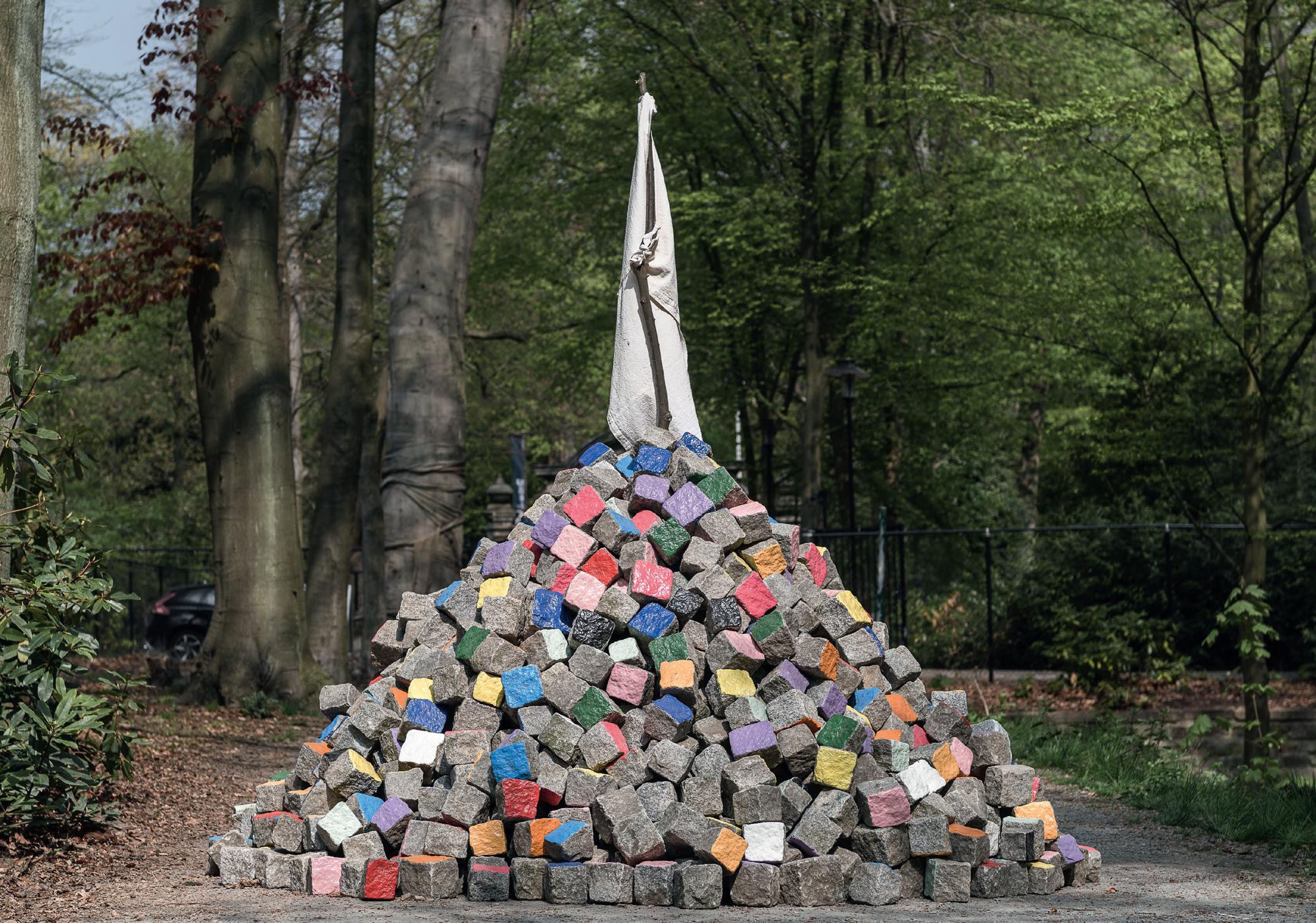
4 minute read
Congoville on the Middelheim site
“The city of Antwerp, and the Middelheim site The exhibition starts from Congoville on in particular, offer a powerful prism through the Middelheim site (the area known as which one can see and re-imagine the contours ‘Middelheim’ is larger than the museum of an invisible city. As a port city, Antwerp site itself). Which colonial traces can be was the Belgian gateway to the Congo for found here? a long time. Ships left here with imperialist beliefs, people and weapons. (…) But the ships The most striking link is to be found just also returned (…). They landed an incredible outside the Middelheim Museum: the amount of material, raw materials, valuables, former Colonial College, established in propaganda in images and words, and 1920, where civil servants for the colonial experiences.” territories were trained. The foundation Sandrine Colard, curator Congoville act of the Colonial College was signed in the Middelheim Castle. The Castle also served as a venue to host important guests and the museum grounds were used for the school’s sports activities. But the school and what it stood for have been forgotten. The first significant research on the topic, commissioned by the Middelheim Museum, has only recently been conducted. So it has taken Belgium some sixty years since the declaration of the independence of Congo, Rwanda and
Burundi to actually take a close look at this important piece of colonial heritage.
A second link is the park where the Middelheim Museum was founded in 1950. The city of Antwerp bought the domain in 1910 and opened it to the public in 1912. These dates are not without meaning. Since 1908, Belgium had been a colonial superpower and that is reflected in the urban development of avenues, monuments, parks and squares. The beginnings of the Middelheim Park parallel the birth of the Belgian colonial, notes Sandrine Colard. The Belgian colonization in five dates:
1885 International recognition of the private colony of King Leopold II: the Congo Free State. 1908 Under international pressure denouncing the abuses, Belgium takes control of the colony: Belgian Congo. 1916 Belgium acquires two German colonies: Ruanda and Urundi, which are run and exploited as one area. 1960 Official end of colonization and independence of the Congo. 1962 Official end of colonization and independence of Ruanda-Urundi. They continue as two separate countries: Rwanda and Burundi.
“The greatest ambition of the exhibition is to take the visitor on a journey in which he learns to distance himself from the imperialist story that is still uncritically glorified in this city. At the same time, it also seeks to show the various African and Africandescendant communities how much the public space is ‘theirs’ as well.” Sandrine Colard, curator Congoville
A third link can be found in the history of the museum itself. According to its 1950 mission, the Middelheim Museum collects and displays an international overview of contemporary sculpture. However, under ‘international’ we understand something different today than we did back then. The collection profile and the exhibitions are currently still very focused on Europe, but in the future we want to change our approach. Congoville fits in this new perspective on the programming and collection policy.
With Congoville, the Middelheim Museum investigates who has a voice in the stories we tell about our culture and society. The Middelheim Museum is committed to polyphony and more specifically to involving people with Congolese and African roots. The aim is to explore new, long-term relationships for the museum, expand the museum’s network and knowledge spectrum, and as an institution learn what our blind spots are. The concept of our guest curator prompted us to look for these partners and to enter into dialogue with them. In concrete terms, this not only resulted in an exhibition and new works of art, but also an extensive public program.
The exhibition, publication and public program have been realized thanks to the enthusiasm, dedication and support of employees and colleagues.
The museum team expressly wishes to convey recognition and gratitude to all discussion partners: they took the time and effort to inform, guide, warn, question, investigate and challenge us. With their help and contributions, the Middelheim Museum wants to bring park, collection and public together in an open space where different perspectives can be safely shared with the audience.
Our special thanks also goes to the lenders, SB BOF Decor Atelier, the Parks Department, Team Conservation and Management of the museums and heritage institutions of the city of Antwerp, University of Antwerp and in particular Linda Schools, MAS (Museum aan de Stroom) – Els De Palmenaer, Nadia Nsayi Madjedjo and Tammy Wille, Pascale Obolo, Louis Van Broekhoven and all employees of the public programme: Yao Issifou, Sarah Agyemang, Omar Ba, Lies Busselen, Judith Elseviers, Ruth Felter, Billy Kalonji, Stef Mabo, Benedicte Moussa, Steve Nzitunga, Souleymane Ouattara, Access ngo, Mirandolo, Sérine Mekoun, Bitshilualua Kabeya, Primrose Ntumba. For more insight into the concepts, backgrounds and contexts of the exhibition, including the research on the Colonial College, and for more information about the artists and artworks, including a number of interviews: see the Congoville publication published by Leuven University Press (2021). This publication is for sale in the museum shop and can be consulted on the museum website, www.middelheimmuseum.be.
Colophon
Text editing: Marijke Van Eeckhaut Translation NL / ENG and ENG / NL: Luc Franken Feedback team: Pieter Boons, Sandrine Colard, Yao Issifou, Ama Koranteng-Kumi, Serine Mekoun, Greet Stappaerts, Sara Weyns. Photographer artworks: Léonard Pongo Archive photo’s: private collection of Bob Vermerght, photographer unknown Legal deposit number: D / 2021/0306 / serial number: 51
Responsible editor: Sara Weyns, Middelheimmuseum 61, 2020 Antwerpen | 2021 | 17834499





